June 15, 2021
When you talk, I listen.
I read every comment on every article that I publish and every podcast I put out.
Your feedback is so important to me; it helps to determine what direction I go with upcoming topics and guests, and your comments and questions give me new insight and perspective.
So when you started saying that you wanted a cookbook, I heard you and got to work.
After all, it’s one thing to read in Boundless how fermenting your own yogurt changes the biome of the gut in a favorable manner and enhances many aspects of endocrine and immune function. But it’s quite another matter to know exactly how I wake up in the morning and quickly whip up a batch of homemade yogurt; the specific strains of bacteria I use; the methods I use to make those bacteria more concentrated or bioavailable; what I mix with the yogurt for goals such as sleep enhancement or muscle building, or even how long the darn stuff stays good in the refrigerator.
So, after countless hours in the kitchen testing, tweaking, and of course doing plenty of tasting—I’m psyched to announce that the Boundless Cookbook officially hit the shelves (including the virtual ones) this week.
Ultimately, the new Boundless Cookbook is my own personal collection of recipes for boundless energy—recipes that are woven into my daily and weekly routine as true dietary staples. (Yep, I regularly eat everything in the cookbook.) And, you can also consider this cookbook to be the perfect companion to my book Boundless.
In this article, as a celebration of the official Boundless Cookbook launch, I want to share with you a few tips that have significantly enhanced my own relationship with food, as well as four never-before-seen bonus recipes that, despite them being absolutely delicious, did not end up making it into the final copy of the Boundless Cookbook. You can think of them as the icing on the “Barukas Nut Cheesecake”—which is in fact a recipe you will find in the cookbook.
First, I’ll Admit: I’m Not a Chef.
That might be a surprising confession from someone who just announced that he published a cookbook. But it’s true.
I will be the first to admit that when it comes to cooking, and especially writing a cookbook, I have full-blown imposter syndrome.
For a large chunk of my early life, I did most of my “cooking” using a microwave, blender, or drive-thru window—simply surviving on a diet of boxed macaroni and cheese, 29-cent hamburgers, frozen hot dogs, and whey protein shakes.
With zero formal training, over the last several years I’ve gained a remote semblance of cooking chops via random YouTube videos, Google searches for terms like “How to make liver taste good”), simple tips my wife mutters as she passes by while I attempt to make myself a proper meal (e.g. “Babe, add a bit of coconut flour to those salmon cakes, and they’ll stop crumbling on you!”), and insightful tips and tricks from the host of nutrition books and cookbooks I’ve amassed over the years (e.g. mix lemon juice with your bone broth to increase collagen bioavailability).
Yet, I do like to tinker in the kitchen. I thoroughly enjoy cracking the code on how to use science and spices to unlock nutrients and enhance the digestibility of the vast array of scrumptious foods we’re blessed with on this planet. And heck, as a self-proclaimed foodie, I definitely like to eat, and furthermore, I like to eat good food.
Luckily, I’ve had my family, who are much more skilled in the kitchen than I am, to help me whip up amazing and interesting meals, taste-test and tweak accordingly, and ultimately co-develop many of the delicious, mouth-watering recipes in the Boundless Cookbook.
For example, my wife Jessa is a rancher girl from Montana who can—with nary a drop of sweat—whip up a crispy roasted chicken on a Friday night and a batch of mouth-watering sourdough cinnamon rolls on Saturday morning, all from scratch.
In fact, Jessa’s world-famous sourdough bread is by far one of my “most requested” recipes of all time (and yes, it is indeed in the Boundless Cookbook).
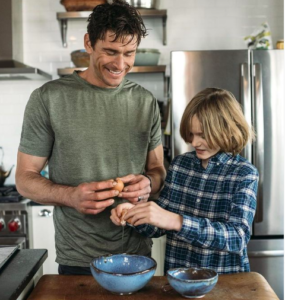 And my twin boys, who likely inherited their mother’s natural knack in the kitchen, have been taking cooking classes since they were four years old and, now at the ripe age of 13, can expertly fashion mushroom risotto and a chocolate soufflé … for their freaking lunch. They’ve become such foodies and culinary experts, they even started their own cooking podcast called Go Greenfields.
And my twin boys, who likely inherited their mother’s natural knack in the kitchen, have been taking cooking classes since they were four years old and, now at the ripe age of 13, can expertly fashion mushroom risotto and a chocolate soufflé … for their freaking lunch. They’ve become such foodies and culinary experts, they even started their own cooking podcast called Go Greenfields.
So, we all teamed together to create the Boundless Cookbook, equipped with 50+ recipes—including my hair-brained, kitchen-sink, health-inducing concoctions; my wife’s most requested, mouth-watering, made-from-scratch classics; and my twin sons’ wildly unique, delicious culinary creations.
Along with the recipes, I’d like to share a few pieces of advice that have significantly enhanced my own relationship with food and helped me fully appreciate how it nourishes my body, mind, and spirit.
Tip 1: Prepare Your Food Mindfully
First, as you begin your own tinkering in the kitchen with these recipes and start to explore the collection of new foods or ingredients you’ll find within the pages of the Boundless Cookbook, I encourage you to prepare your food with mindful awareness.
Take a simple cup of coffee, for example. Sure, you can rush to your kitchen in the morning, curse as you fumble with the coffee filter, quickly prepare your water as you glance at your watch and think about your email inbox, then hover over your coffee, sipping madly as you scroll through text messages.
Alternatively, you can slowly open the bag of coffee, take a satisfying whiff of the intense aroma of floral and cacao, perk up your ears as you listen to the whooshing and light sprinkling of the water as it falls into the kettle or coffee maker, and take those first few sips with your eyes closed, fully mindful and grateful of a rich superfood from South America that has magically appeared in your kitchen to fire up your precious brain for a day of impactful and purposeful work.
See the difference?
As you make your next meal, I invite you to devote all of your awareness to the present moment and the sensations that arise: the texture of a slice of bread, the sensation of chopping vegetables, the aroma of fresh-cut herbs.
I personally enjoy thinking of preparing and eating food a bit like making music, which is a practice that requires a great deal of mindfulness. Managing multiple pans on the stove can be like playing the drums, and finely slicing a clove of garlic like tuning a mandolin—two activities that require your full attention, and simply can’t be done well while cradling a phone in your ear or sending a text message.
Approach food preparation, and even food consumption, similarly.
Bonus Recipe 1: Injera Bread
The following recipe is courtesy of my twin boys, River and Terran. On an episode of GoGreenfields, my sons made this bread as part of their “Breads of the World” series.
Injera is a sponge-like Ethiopian flatbread that’s not only delicious, but highly nutrient-dense, with plenty of potassium, calcium, and other nutrients. It does require a bit of patience to make, with the entire process taking four or five days, but that’s what makes it the perfect recipe with which to practice mindfulness as you thoughtfully devote the time each day to nurturing the bread to completion.
The hidden star superfood in this recipe is Himalayan Tartary buckwheat flour, which was first introduced to me by the father of functional medicine, Dr. Jeffrey Bland. Native to China, Himalayan Tartary buckwheat is gluten-free, high in dietary fiber, and rich in minerals, polyphenols, phytosterols, and nutrients, making it an effective anti-oxidative, anti-cancer, anti-hypertension, anti-diabetic, cholesterol-lowering, and cognition-improving food. I had a hard time hunting it down myself, but found this tiny farm in New York State called “Angelica Mills” that grows it.
 Ingredients:
Ingredients:
- 4 cups Angelica Mills Tartary buckwheat flour
- ½ teaspoon salt
- 5 cups lukewarm water
Directions:
- Gather the ingredients.
- In a large mixing bowl, combine the flours and salt until well mixed.
- Add the water, stirring until combined.
- Cover loosely with a paper towel and let stand, undisturbed, overnight.
- Gently agitate the mixture with a wooden spoon in the morning (there should be bubbles already forming on the surface, and the fermenting water should have risen to the top).
- Cover again and let stand at room temperature, undisturbed, overnight. Repeat the process of agitating the mixture the following morning, and then one more round of overnight resting.
- After 3-4 days, your Injera should smell sour and be very bubbly, which means that it’s ready. Stir the mixture until combined.
- Heat a large, lightly-oiled heavy-bottomed skillet over medium-high heat. Add about ⅓ cup of the batter to the skillet, forming a thin layer of batter over the pan. Cook until bubbles form on the entire surface of the flatbread (do not flip; only cook one side like a crepe).
- Using a metal spatula, remove the Injera and transfer to a plate.
- Repeat until all of the batter is used, adding oil to the skillet as necessary.
- Serve with spicy vegetables, lentils, or meat dishes of your choice.
Tip 2: Be In Awe Of God’s Creation
Second, in the process of preparing food, cooking, or as you sit down to enjoy a meal with your family, I encourage you to cultivate awe at the wonders of God’s creation.
Personally, I often find myself pondering the magic, beauty, mystery, and wonder of the vast array of superfoods scattered across this Earth as I’m chopping onions or stirring a homemade sauce.
Multitudes of examples abound that display the mysteries and wonders of superfoods in creation. From goji berries and coffeeberry fruit to spirulina and chlorella algae to Barùkas nuts and chia seeds, we walk a planet rich in bountiful blessings. Yet how often do we drop our jaws in pure awe at these mysterious, wonderful fruits of the Earth?
In the Bible, Psalm 104:24-25, sums things up quite nicely:
“O Lord, how manifold are Your works!
In wisdom You have made them all.
The earth is full of Your possessions —
This great and wide sea,
In which are innumerable teeming things,
Living things both small and great.”
Elsewhere, in John 1:3, we learn that: “All things were through Him; and without Him nothing was made that was made.”
So yes, that means that Almighty God formed and fashioned the cacao tree, the cannabis plant, the chickpea, and the catfish—and all this marvelous bounty is ours to enjoy in all of its intricacy, beauty, and, yes, tastiness. It doesn’t get much more awe-some than that. I packed the Boundless Cookbook with as many God-given superfoods as I could, but there is also a beauty in the less-revered foods that are “super” in their own right.
Bonus Recipe 2: Reverse Sear Pork Chop
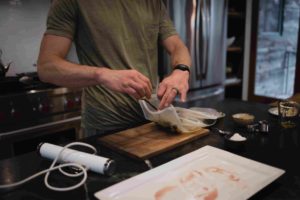 When you think about how God created all living beings, the humble pork chop deserves a rightful place in the dinner rotation for us carnivores.
When you think about how God created all living beings, the humble pork chop deserves a rightful place in the dinner rotation for us carnivores.
The pork chop doesn’t get a lot of attention, despite a massive advertising campaign in the 1980s proclaiming pork as “The Other White Meat.” Chicken still seems to be the go-to for most American dinners, a nice cut of steak is a heartier and fancier option, and fish is hailed for health (though the topic of Omega-3 fatty acids and fish oil is complicated—you can learn more from this podcast).
Pork chops, though, are a great alternative for weeknight dinners, as they’re lean, tasty, and have nutritional benefits such as containing twice as much selenium—an essential mineral that's linked to a lower risk of prostate cancer—as chicken.
This recipe is an explosion of sweet/savory crispy-on-the-outside, tender-evenly-cooked-on-the-inside meat, and is a staple in the Greenfield home that requires almost no work in the kitchen to make.
Ingredients:
- US Wellness Meats bone-in (big old!) pork chop
- Extra virgin olive oil
- Rosemary
- Black Kona salt
- Chopped dates
- Vanilla bean extract
- Powdered cacao
Directions:
- Marinate bone-in pork chops in Stasher Sous Vide bags* all day in fridge, using a “marinade” of extra virgin olive oil, rosemary, black Kona salt, chopped dates, and vanilla bean extract.
- Place bags in a Sous Vide bath at 165°F for an hour.
- Remove them from the Sous Vide, and pour date/vanilla bean/rosemary-infused olive oil into a cast-iron skillet.
- Dredge the pork chops through powdered cacao and sear the pork chops for 4 minutes per side, to about 140F.
*Note: Sous Vide is a method of cooking food by vacuum-sealing and immersing in warm water that's particularly good for meat or fish. Here's an alternative, though, if you don't have a Sous Vide.
Tip 3: Think Of Food As A Means To Fuel Your Soul
Next, I urge you—especially if you are religious or immersed in the spiritual disciplines—to consider food not as just a collection of physical atoms and molecules largely disconnected from the ethereal dimensions of your spirit, but rather as a means to fuel your soul.
Thus, the care of your physical body, whether via diet or exercise, can simply be a manifestation of your spirituality.
In the book Living By Design, authors Ray Strand and Bill Ewing consider health in the light of eternity, emphasizing that good health, including that obtained from eating nourishing, healthy food, brings us closer to God and should be viewed as fuel for fully manifesting our purpose in life.
They say: “Having a healthy body is not a worthy goal in and of itself. In fact, if we seek that first, we have missed the entire point of our existence. We are called to something infinitely greater and eternally more important: a vibrant relationship with God that overflows into loving service to others and continual worship of Him as our Creator. The body is simply an earthly tool He has loaned us for that purpose. That truth must always come first. Then (if we are wise) we will seek to make that tool as efficient and effective as it can be for that purpose.”
My friend, Dr. Joseph Mercola, speaks similarly when he says: “If you take care of your body not only do you prevent disease and illness and prolong your life, but you also vastly improve the quality of your life. You can increase your daily energy, creativity, attention span, and mental focus, allowing you to achieve more in the pursuit of whatever matters to you… It only takes common sense to understand that what you put in your body several times a day, every day, will have far more impact on your being than anything else you do.”
In other words, what you put into your body is not only important for your physical health, but also for your spiritual health and, ultimately, for fulfilling your life’s purpose.
Bonus Recipe 3: Pumpkin Pie Smoothie
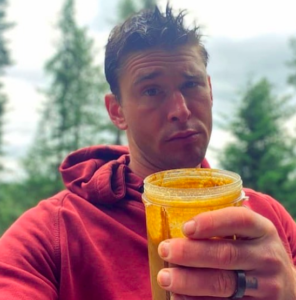 While I don’t know if I’d go so far as to say that drinking a single smoothie—even one that's packed with nutrition—will bring you closer to God, I wholeheartedly believe a healthy body is a primer for a healthy spirituality. And this Pumpkin Pie Smoothie is one of the healthiest breakfasts I make, packed with easily digestible nutrients from a handful of different superfoods.
While I don’t know if I’d go so far as to say that drinking a single smoothie—even one that's packed with nutrition—will bring you closer to God, I wholeheartedly believe a healthy body is a primer for a healthy spirituality. And this Pumpkin Pie Smoothie is one of the healthiest breakfasts I make, packed with easily digestible nutrients from a handful of different superfoods.
Pumpkin puree is thought to improve eyesight, boost immunity, and keep your skin looking young, as well as being rich in the antioxidants alpha-carotene, beta-carotene, beta-cryptoxanthin, and others. In fact, I consider it one of my top pantry staples.
I also often add in some Kion Colostrum, which contains natural sources of vitamins, minerals, proteins, and enzymes, making it an unrivaled ancient food that promotes healthy gut function, supports the immune system, and enhances athletic recovery.
The third main ingredient, a hefty dose of Organifi Gold Pumpkin Spice, not only uplevels the amazing pumpkin flavor of this smoothie, but contains a host of additional superfoods such as turmeric, reishi mushroom, and ginger.
One more note…there's another version of this Pumpkin Pie Smoothie in the Boundless Cookbook; I'm a big fan of this flavor and I encourage you to try both or get creative and make up your own!
Ingredients:
- Giant blender bowl of ice
- 1 dropperful of Omica Organics Vanilla Stevia (or any Stevia or Monk Fruit sweetener will do)
- ½ teaspoon salt (use high-quality salt, I use Colima)
- 1 teaspoon Ceylon Cinnamon
- 1 serving Kion Colostrum (break open capsules)
- 3 scoops Organifi Gold Pumpkin Spice powder
- 2 tablespoons organic canned Pumpkin Puree
Directions:
- Add all of the ingredients to a blender.
- For liquid, I like to use either bone broth or, for more calories, coconut milk.
- Top with a handful of unsweetened shredded coconut flakes, a few chunks of dark chocolate, and a few chunks of Maple Pecan Keto Brick cut into pieces.
Tip 4: Enjoy Your Food In A Parasympathetic State of Relaxation, Mindfulness, and Gratefulness
Finally, I encourage you to analyze the mental state in which you enjoy your food. Eating in a stressed, or sympathetic state predisposes you to leaky gut syndrome, inadequate digestive enzyme production, poor nutrient absorption, and overeating—all topics I explore in great detail in the “How To Fix Your Gut” chapter of my book Boundless.
In contrast, eating in a relaxed, parasympathetic state (e.g. with friends and family at your dinner table and not at your computer screen or while scrolling on your phone), and adequately chewing your food, allows you not only to savor and enjoy your meal, but also to properly digest, absorb nutrients, and feel more satiated.
This savoring and gratefulness for food can ultimately bring us closer to our Creator. John Piper sums this up quite nicely in Chapter 2 of his excellent book Don't Waste Your Life when he says, “God created you and me to live with a single all-embracing, all-transforming passion—namely a passion to glorify God by enjoying and displaying his supreme excellence in all the spheres of life.”
In my own personal experience, I’ve found that one of the best ways to approach eating with this spirit of relaxation is to create some kind of routine or ritual for each meal. This pre-meal habit can include a few relaxing breaths, a blessing, a prayer, or even a song.
For example, one easy breathwork practice we often implement at the Greenfield dinner table is to simply close your eyes, take a deep, slow breath in through the nose, then out through slightly pursed lips, and repeat three times.
Another simple habit is to think of one thing you’re grateful for and say it aloud prior to your meal. Or if you are in a group, you can go around the table and have each person name one thing they are grateful for. Simply saying a prayer to bless the food is another way to enhance your parasympathetic state.
Bonus Recipe 4: Melt-In-Your-Mouth, Hella-Easy Short Ribs
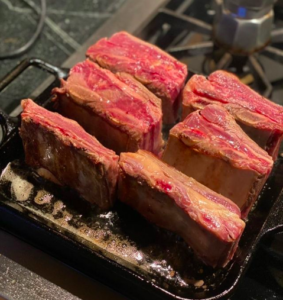 There’s no better way to enjoy your meal in a relaxed state than making a meal that requires little-to-no work at the end of a busy day.
There’s no better way to enjoy your meal in a relaxed state than making a meal that requires little-to-no work at the end of a busy day.
Jessa and I are always looking for delicious ways to prepare food that will nourish us without requiring a great deal of effort after a packed day of writing, adventuring, gardening, unschooling, and everything else we do.
Since writing the Boundless Cookbook, I’ve discovered the time-saving magic of a pressure cooker, which is simply a sealed pot with a valve that controls the steam pressure inside. As the pot heats, the liquid inside forms steam, which raises the pressure in the pot. This high-pressure steam raises the boiling point of any liquid in the pot, which helps the food to cook faster, and promotes caramelization and browning in a way that creates surprisingly deep and complex flavor profiles of even the most difficult-to-cook or traditionally “tough” cuts of meat, such as short ribs.
These short ribs are the perfect meal base for a weeknight family dinner, which should always be taken in a state of relaxation and gratitude, because in truth, what could be more of a gift from God than sitting around your dinner table with loved ones?
Ingredients:
- US Wellness Meats short ribs
- Salt
- Pepper
- Garlic
- Thyme
- Rosemary
- Joey’s Hella Raiser hot sauce (use code BEN to save 20%)
- Wine
- Bone broth (US Wellness Meats or Kettle & Fire)
Directions:
- Add equal parts bone broth and wine into the pressure cooker with salt, pepper, garlic, thyme, rosemary, and a few splashes of hot sauce.
- Quickly sear the ribs on a hot skillet to lock in the flavor, about 2-3 minutes per side.
- Drop them into the pressure cooker for about 30 minutes.
- Remove, slather with barbecue sauce (I dig Primal Kitchen sauce for this and you can save 10% with code BEN) and transfer to a broiler for a final 4-minute caramelization sear.
Summary
Food isn’t just about minerals, vitamins, proteins, carbohydrates, fat, and calories.
 Food can feed the soul. Food connects us. Food fuels traditions and memories. Food is something we gather around. Food changes our mood, for better or worse. Food can create bliss and contentment that one feels far beyond their stomach, small intestine, large intestine, and bloodstream.
Food can feed the soul. Food connects us. Food fuels traditions and memories. Food is something we gather around. Food changes our mood, for better or worse. Food can create bliss and contentment that one feels far beyond their stomach, small intestine, large intestine, and bloodstream.
In that way, I think of the Boundless Cookbook as not just a collection of recipes, but as a guide to enhancing your relationship with yourself, your family, and God through nourishing a healthy body, which in turn feeds (pun intended) your spirit.
So I offer you the Boundless Cookbook this week in gratitude, because without your comments, questions, and continuous requests for healthy recipes to nourish your families, I would not have embarked on this project—which ended up feeding me (yes, another pun)—in ways I never would have expected.
And now that it’s officially launched into the world, I feel blessed to be able to share some of that goodness with you. Enjoy.
Do you think you’ll try any of the recipes in this article? If you do, I’d love to hear your feedback. I also want to hear what you think about the recipes in the Boundless Cookbook. Leave your comments, questions, thoughts, or experiences below. As I said at the beginning of this article, I read them all!

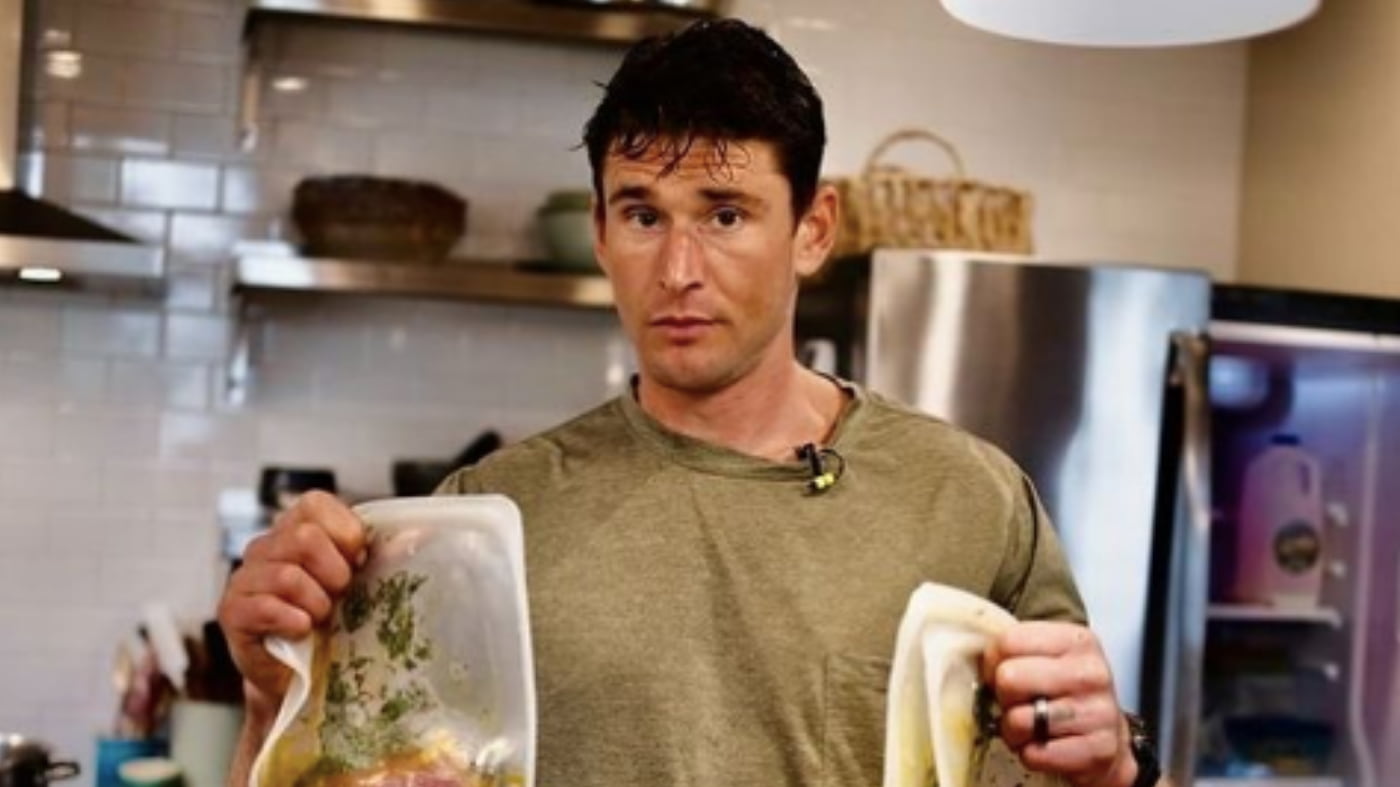
hey Ben, what are your thoughts on the keto or low carb diet.
thanks
Lyndel
Hi Ben!
Thank you for your work and in my particular case, thank you for introducing me to Dr Beck! He’s saved my life!
Do you plan to make an ebook version of your cookbook? That would be great for those of us international followers.
Hi Erika! Thanks for the question! You can now get the Kindle version on Amazon: https://amzn.to/3i9htoV